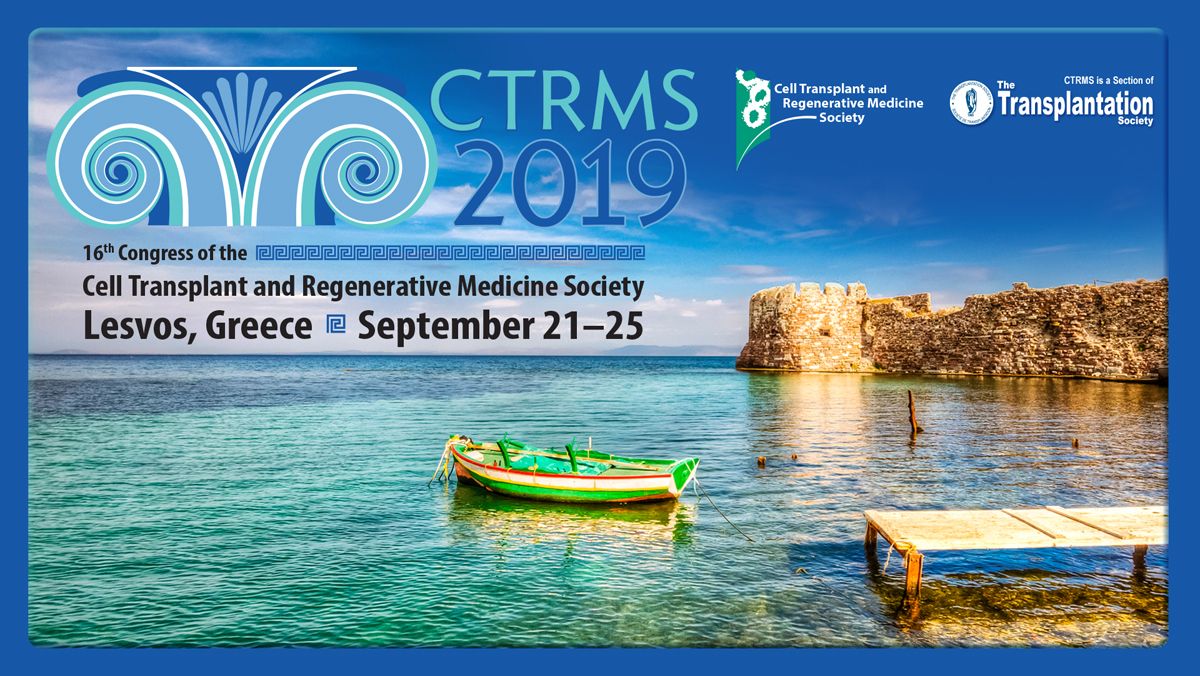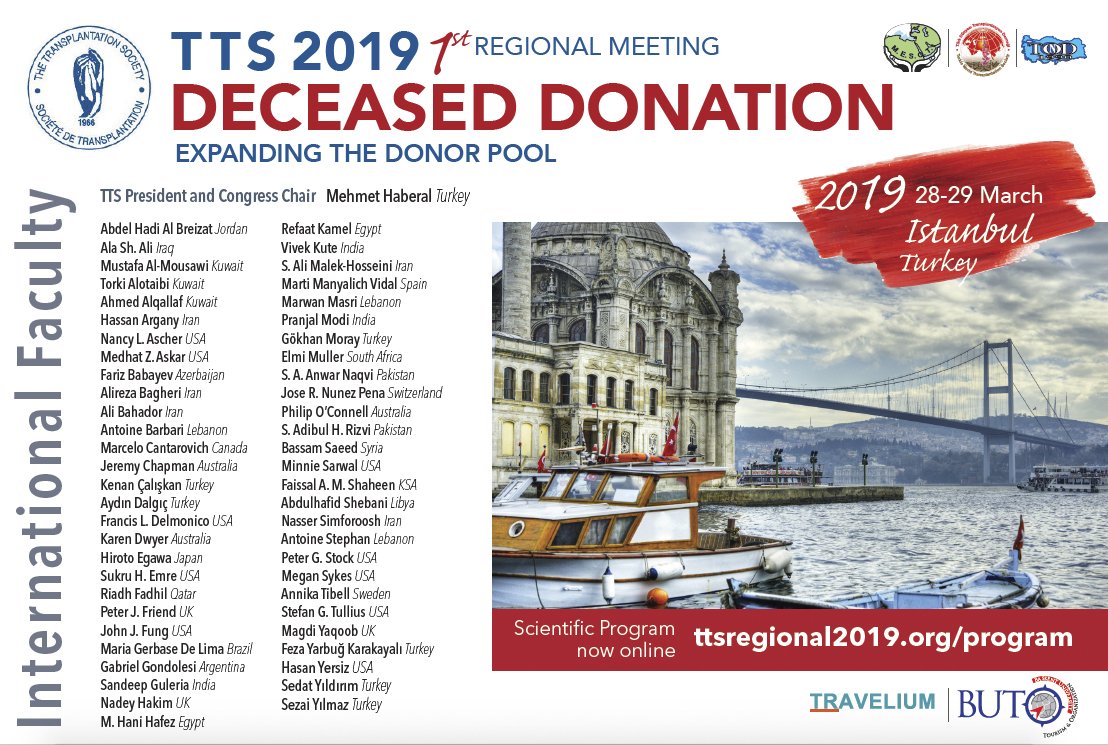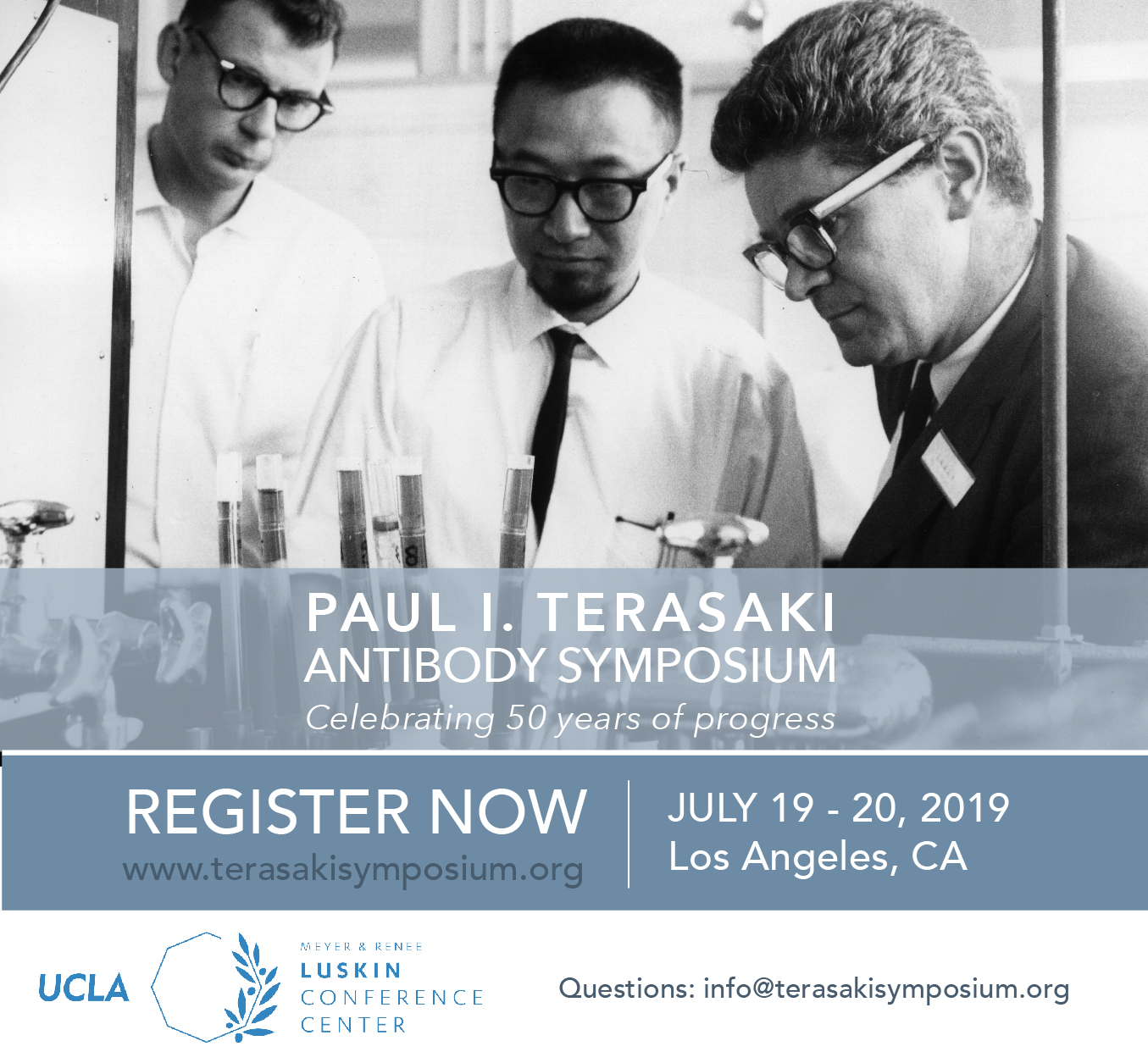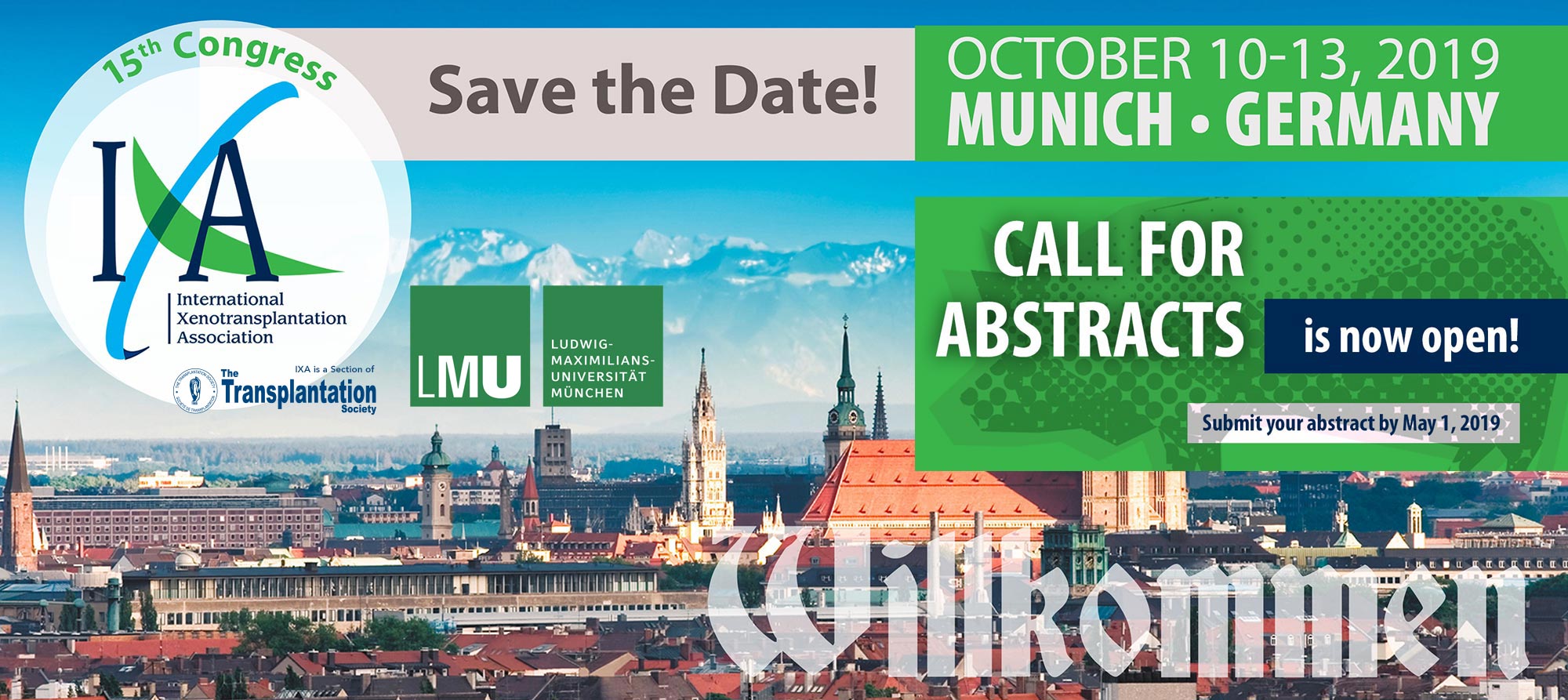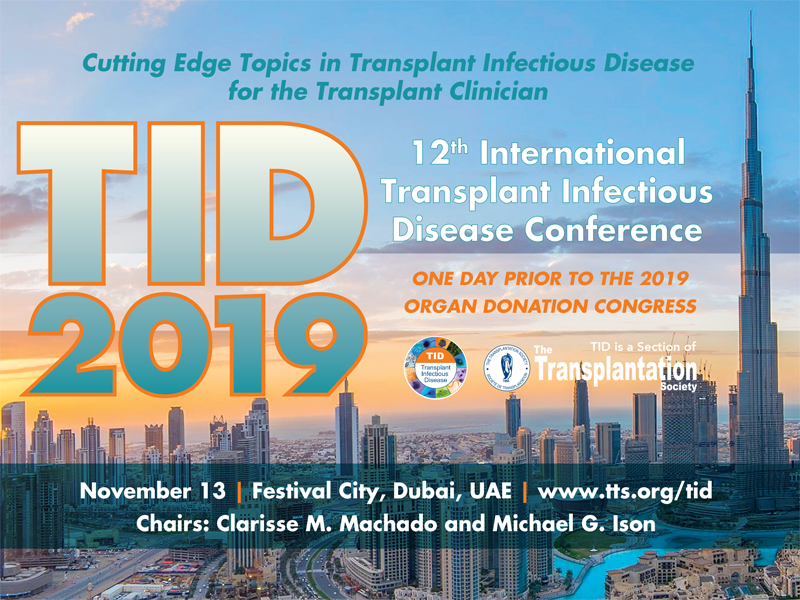
Just Released - Transplantation - March Issue
An issue packed with new features—a quick way to find out what was new at the last ILTS congress, the Asian consensus on immunosuppression after liver transplant, a fabulous review of the impacts of APOL1 in renal transplantation, antiphospholipid antibody effects and graft thrombosis, cancer risks, DSA technology, how good is a duodenal biopsy to manage pancreas transplants, and the outcome of 10 years of the Lung Allocation System in the USA. There is much to read and some interesting ideas to think about.
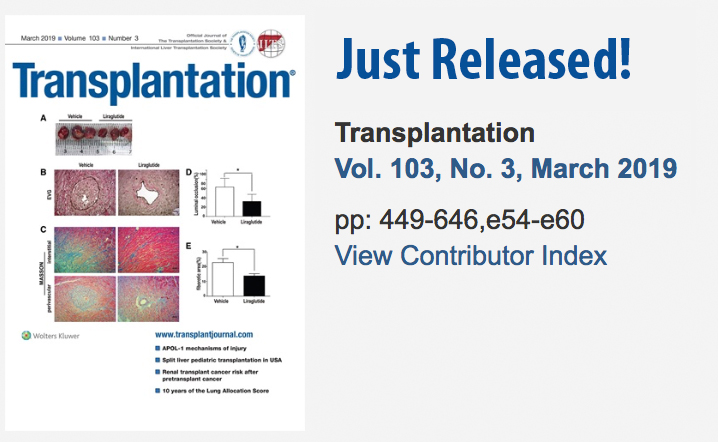
CLICK HERE TO ACCESS THIS ISSUE
TTS MEMBERS - CLICK HERE TO SIGN-IN FOR OPEN ACCESS THROUGH TTS.ORG
2019 TTS TRansplantation Science COmmittee NEWS
Hold the Date - November 10-13, 2019
The TTS Transplantation Science Committee is pleased to announce the 2019 International Transplantation Science Meeting which will be held from November 10-13, 2019 in Clearwater Beach, Florida, USA. This is a joint meeting between TTS, AST and ESOT. More information will soon follow.
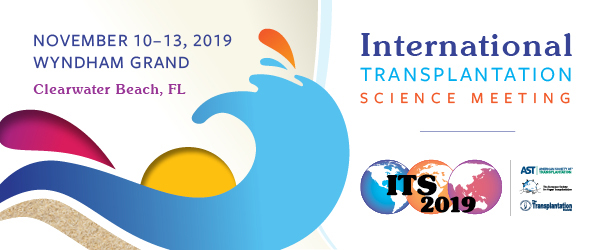
CTRMS 2019 – Abstract Submission Deadline is EXTENDED - MARCH 25, 2019
IPITA 2019 LYON
Deadline for submission of abstracts has been extended to March 15, 2019
TRANSPLANTATION - HIGHLIGHTED ARTICLE
Dr. Andrea Schlegel, Editorial Fellow, Transplantation
Oxygenated UW Solution Decreases ATP Decay and Improves Survival After Transplantation of DCD Liver Grafts
Martins PN, Berendsen TA, Yeh H, et al.
Transplantation 2019 Feb; 103(2): 363-370
There is accumulating evidence that simple cold storage preservation is suboptimal for solid organs. Several new perfusion techniques are therefore currently under investigation. Normothermic machine perfusion is currently applied to achieve near physiological conditions ameliorating the detrimental consequences of prolonged cold ischemia time while also assessing the viability and quality of organs. Cold or hypothermic oxygenated perfusion has also been tested. The main target here is to recondition mitochondria, to recharge cellular energy leading, thus reducing free radical release from the respiratory chain with less reperfusion injury when organs achieve normothermic temperatures during reperfusion. However, each new technology presents with disadvantages. And despite the expected benefit of improved graft function and a reduction of complications after transplantation, machine perfusion comes with logistic challenges and higher costs.
Here, the authors have introduced high oxygen concentrations into the solution of cold stored organs. In an experimental model of DCD rat liver transplantation, organs have been stored in a highly oxygenated solution (mix of preoxygenated perfluorocarbon and University of Wisconsin solution. Recipients of those grafts showed significantly improved survival, with higher ATP concentrations when compared to recipients of standard cold stored livers preserved under lower oxygen concentration. Interestingly, the authors confirmed with their model the rapid loss of ATP during the initial 30 minutes of warm ischemia time. The authors also show that a high oxygen concentration during simple cold storage improves graft survival when compared to cold machine perfusion or persufflation, indicating that a ‘fancy’ perfusion technology may not be necessary.
TTS 2019 Regional Meeting
The TTS 2019 Regional Meeting will feature a distinguished international faculty to discuss the critical issues in expanding the donor pool for deceased organ donation.
We are offering low registration fees, which are further reduced for TTS, MESOT, TDTD or TOND Members, nurses and non physicians. Students may attend the meeting for free.
In the News
'Mini' livers from iPS cells to be transplanted into sick infants
Yokohama City University said it expects to win approval to begin transplants of “mini" liver bio-engineered from induced pluripotent stem (iPS) cells into infants with serious hepatic disease. Researchers intend to submit their clinical study proposal as early as this summer to a screening committee set up at Keio University to examine the safety of projects involving regenerative medicine.
HBV, HCV, and HIV Screening Results of Deceased Solid Organ Donors
February 21 - Increased risk donors may be significantly more likely to be hepatitis C virus (HCV)- and hepatitis B virus (HBV)-positive compared with standard risk donors, according to a Morbidity and Mortality Weekly Report. To reduce the risk for unintended organ transplantation-associated HBV, HCV, and HIV transmission, the Public Health Service released a revised guideline in 2013 that described criteria to categorize donors at increased risk for transmitting these viruses to recipients and recommends universal donor testing for HBV, HCV, and HIV.
Stem Cell-Macrophage Interactions with Ferumoxytol and Ferumoxytol-derived Nanoparticles

February 22 - Bone and cartilage injuries can cause chronic pain, joint stiffness, and impair mobility. Bone and cartilage injuries can result from degenerative arthritis, trauma, or tumor surgery, and often do not heal without major surgery. Stem cell transplants can directly repair bone and cartilage defects. Stem cell transplants can also reduce pain by producing anti-inflammatory mediators. However, harvesting stem cells from a patient is expensive and requires a biopsy or surgery to harvest them.
Doctors eradicate Hepatitis C in patients after heart transplants from infected donors
February 25 - Nine patients have recently been cured of the Hepatitis C virus (HCV) following lifesaving heart transplants from deceased donors who were infected with the disease, according to a new study. The results highlight the potential for expanding the use of HCV-infected organs, including hearts, to broaden the donor pool for the more than 100,000 Americans currently on a transplant waitlist.
Researchers Seek Ways to Prevent Diabetes Onset in High-Risk Patients'
February 26 - Researchers have long believed that diabetes begins when the immune system attacks insulin-producing beta cells in the pancreas. But by investigating beta cells’ complex biology, researchers at the University of California-San Francisco Diabetes Center made a discovery that could prevent the onset of the disease in people who are at high risk.
Urea-powered nanomotors a promising therapy for bladder cancer
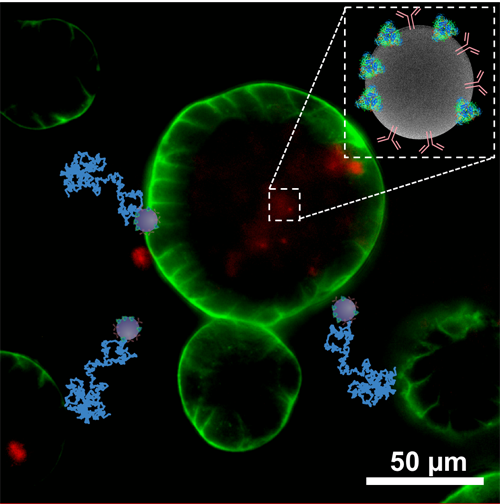
February 25 - IBEC’s Smart Nano-Bio-Devices group have published a paper describing nanomotors that can attack 3D bladder cancer spheroids in vitro. The nanomotors carry anti-FGFR3 on their outer surface, an antibody that not only enables cancerous cells to be specifically targeted, but also inhibits the fibroblast growth factor signaling pathway, suppressing tumor growth.
Upcoming Meetings and ANNOUNCEMENTS
TID2019 - SAVE THE DATES!
PrE-MEETING TO ISODP 2019 - SAME VENUE ...one day prior!
Contact
+1-514-874-1717
This email address is being protected from spambots. You need JavaScript enabled to view it.
Address
The Transplantation Society
International Headquarters
505 Boulevard René-Lévesque Ouest
Suite 1401
Montréal, QC, H2Z 1Y7
Canada

